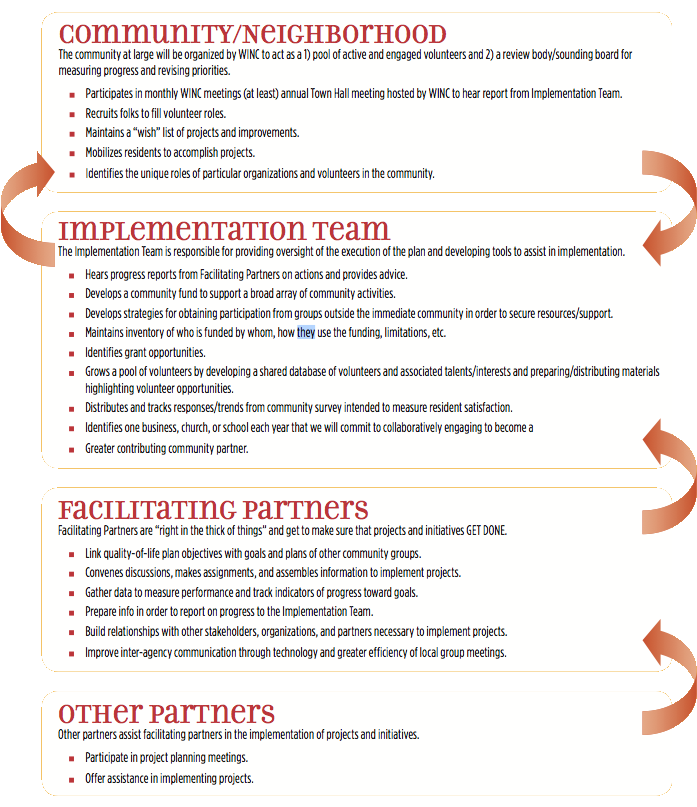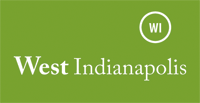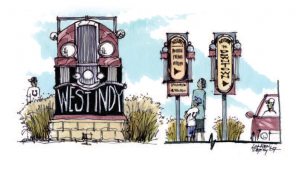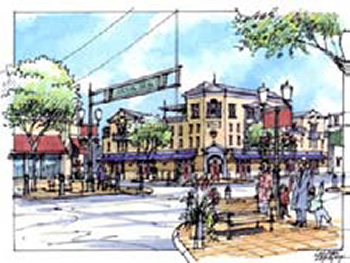Vision
West Indianapolis is a vibrant and diverse community of families collaborating with a variety of outstanding schools, service organizations, churches, and neighborhood services to build and celebrate community participation and pride. Valuing family life, lifelong learning, economic opportunities, neighbors helping neighbors, and strong community connection within West Indianapolis and beyond, we open our hearts and minds to the ethnic diversity that is evident among our neighbors and businesses. Our mixed-use neighborhood is a safe, clean and well- maintained place that inspires culture, history, a welcoming atmosphere, and modern neighborhood living and that offers outstanding recreation and leisure opportunities through connections to Eagle Creek Park and the White River Greenway.
Community building is more an orientation than a technique, more an outlook than an activity. A community’s own strengths, whether they are found in churches, block clubs, local leadership, or its problem-solving abilities, are central. Community building is based on the belief that urban neighbors and neighborhood institutions can and must be primary actors in efforts to solve the problems of their neighborhoods. – Lizbeth Schorr in Common Purpose
It’s not up to the people behind me, it’s up to you! We live here and it is up to us to make sure our problems are solved. They can help us, but we must do it. -Merri Young at WINC’s 2007 Town Hall Meeting in which City representatives responded to resident questions
These two quotes exemplify West Indianapolis residents’ tenacity toward demanding performance from community organizations and the City. They also indicate an understanding that their destiny lies, to a great extent, in their own hands. Because of this belief they have collaborated with institutional/ agency stakeholders to develop an organizational plan for implementing the quality-of-life plan and for achieving the vision that they have for their community. That vision encompasses the physical, social, and economic conditions that shape the quality of life in the neighborhood:
Indianapolis is a vibrant and diverse community of families collaborating with a variety of outstanding schools, service organizations, churches, and neighborhood services to build and celebrate community participation and pride. Valuing family life, lifelong learning, economic opportunities, neighbors helping neighbors, and strong community connection within West Indianapolis and beyond, we open our hearts and minds to the ethnic diversity that is evident among our neighbors and businesses. Our mixed-use neighborhood is a safe, clean and well-maintained place that inspires culture, history, a welcoming atmosphere, and modern neighborhood living and that offers outstanding recreation and leisure opportunities through connections to Eagle Creek Park and the White River Greenway.
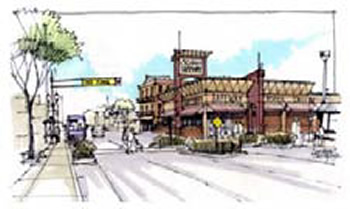
Design charrette vision illustrating a new facade on the Safeway grocery store as well as improved streetscape and pedestrian elements.
Design Workshop
As part of the GINI planning process, West Indianapolis was able to take advantage of the talents Ball State students who were asked to brainstorm design solutions for improving the quality of life in the neighborhood. Specifically, the objective of the charrette was to help the community envision: 1) how Morris Street could become a more attractive, pedestrian-friendly mixed- use corridor; 2) how Belmont Street could provide a more pedestrian-oriented character that provides a comfortable connection to Rhodius Park; and 3) how gateways into the neighborhood and greenway connections to the zoo could be created.
These objectives were formulated through resident and business input that identified the following community desires:
- welcome sign as you come off the bridge into the neighborhood,
- more pedestrian traffic, better lights, better walks, more trees (particularly at Morris and Harding),
- welcome signage at Morris and Harding as one comes south into the neighborhood – new health center will be going in on the SW corner of this intersection,
- improve Morris-Harding area for pedestrian traffic – needs to be walkable since the health center will be there/needs to be a way for people to cross the intersection,
- continuity of signs and lighting,
- re-route truck traffic off of Morris coming from IPL on the north side of Morris Street (possibility of using Ray Street),
- bumpouts around or other improvements to narrow the crossing distance and define parking,
- positive feelings about the area between Kappes and Tremont that is more business oriented, but don’t mind other residential uses on Morris – would like to see the zoning more friendly to the residential uses,
- people see the value of the green space around Kappes and Tremont and would like to see that augmented with better lighting and signage,
- comfortable with mix of uses along Morris – mix of commercial and residential,
- gateways at major entrances to the neighborhood: Harding and Morris (coming off of I-70 going south on Harding), Morris and Holt intersection coming west off of bridge over White River (western boundary), Raymond and Harding (southern boundary), Holt and Raymond (southwest corner coming off of Kentucky Avenue.),
- bike trails/access –want to consider ways to accommodate bike riders into the neighborhood, and
- improve the image of West Indianapolis in the broader community – people say they don’t know where it is
Additionally, the community was seeking recommendations on: zoning, public improvements, transit access, truck traffic patterns, “branding ideas” (how do those unfamiliar with West Indianapolis draw some positive impressions and how can West Indianapolis build upon those), how to attract more retail along Morris and Harding, connecting residents to greenway, identifying some quick-fix-design solutions for creating and linking destinations, and generating ideas for long- term-design goals for creating and linking destinations.
The students came up with the following design and planning ideas:
- Develop a rapid transit station along existing rail tracks north of Morris and east of Harding near the Eli Lilly campus.
- Create town center attracting a critical mass of retail extending westward from Morris and Belmont extending westward from Morris & Belmont.
- Plan for new regional park to replace industry along Eagle Creek.
- Capitalize on new housing opportunities south of Morris Street and west of suggested new regional park.
- Upgrade and reconnect residential areas north of Morris and at west end of neighborhood.
- Concentrate industry in areas south of Minnesota between Harding and Belmont and north of Morris on both sides of Tibbs west of Eagle Creek so that residential areas can remain contiguous and truck traffic could be diverted away from the center of the neighborhood.
Upon establishing the neighborhood vision, becoming inspired by the charrette ideas, and working through an action plan, stakeholders reconsidered the 11 Principles of Healthy Neighborhoods promoted by list as a framework for working together to affect sustainable social change. Stakeholders had already embraced these principles by organizing their goals and action plans into the four principles categories: civic (leadership, vision, collaboration), social (services, education, culture), physical (safety, environment, housing), and economic (business diversity, economy); but felt the West Indianapolis community would benefit from their own additional principles that establish a framework for how and why groups are going to collaborate in the neighborhood. The result of that inquiry is the following statement regarding the collective idea for collaboration, indicators, core values, guiding behaviors, and critical actions that all “roll up” into an organizational structure for ongoing collaboration and implementation of the quality-of-life plan objectives. In a nutshell, the West Indianapolis Steering Committee will continue to meet with a new charge of managing the implementation of plan activities. Details of the commitments and common values within this organizing structure are on the following pages.
Quality-of-Life Plan Organizational Structure
West Indianapolis partners will continue their collaboration in order to achieve the following vision:
Organizing Idea
West Indianapolis stakeholders are empowered by an ongoing structure for funding and collaboration that ensures they are actively engaged with one another and working to achieve community goals.
Indicators
- Resident satisfaction with priorities and programs (use 2004 survey as a baseline),
- Dollars raised toward meeting community goals,
Core Values
- A community is defined by people who share a common commitment, belief, or experience; we share a commitment to improving the quality of life in West Indianapolis.
- A healthy community values all of its members – the young, the old; the affluent, the struggling; the resident, the employer/employee; and the native, the transplant.
- Community is a dynamic, sometimes messy process often fueled by crises.
- Community tends to thrive when information is abundant, available, accessible and visible; when communication is open and frequent; and when ideas are shared.
- Community resources are fragile and sometimes unhealthy. Mistakes and missteps are rarely intentional and always an opportunity to learn and improve.
- True partnerships require trust, honesty, and the conviction that we all are working toward the same goal – even if we disagree on how to get there.
- Inaction is sometimes better than reckless action; but WE must take action to achieve the community we want.
- None of us will succeed if one of us is faltering; the help we provide today could be the help we receive another day.
- West Indianapolis is not an island; as we are building healthy collaborations internally; we need to foster them externally as well.
Guiding Behaviors
- Expecting to be asked to lead where we have not led before—and carefully evaluating the likelihood of success with those opportunities.
- Making decisions for the greater good of West Indianapolis. Collaborating with others to achieve results.
- Treating everyone with respect, dignity, and common courtesy regardless of age, background, lifestyle, or position within the community.
- Acting ethically, honestly, and fairly. Identifying quarterly short-term goals in the midst of planning for the achievement of long-range goals. Assisting one another in achieving individual organizational goals. Reminding one another of these principles when our actions conflict with them.
Critical Actions
- Look for opportunities for synergy and synthesis.
- Communicate issues timely, openly, directly, and, in some cases, privately and discretely.
- Acknowledge positive aspects or actions FIRST when bringing up negative outcomes or behavior.
- Clarify and revisit often our hopes and dreams with stakeholders, neighbors, and the larger community.
- Work at connecting people to one another and to readily available resources.
- Promote the need for basic services funding.
- Identify ways to help neighbors in need.
- Assist in promoting programs and services available at our branch Library.
- Engage, seniors, and Hispanics in planning events and activities in the neighborhood.
- Increase family involvement and interaction within the community.
- Host events that encourage interaction and involvement.
- Meet people where they feel comfortable.
